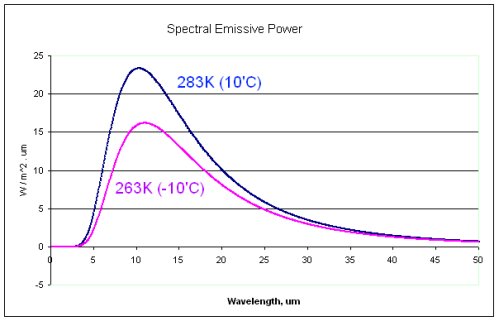No. It doesn't absorb like a blackbody either.
Does that statement of fact now mean that you agree that the SB law is being wrongly applied to the atmosphere in order to fabricate a greenhouse effect, and with it, its bastard stepchild the AGW hypothesis?...because if you can't apply the SB law to the atmosphere, then you can't have a greenhouse effect as described by climate science.
There you go again. You make a bald statement with no explanation of what you mean, and then claim victory.
I am no fan of the consensus science version of AGW theory and the doomsday conclusions drawn from it. Get that straight in your head.
But I am a big fan of the notion that CO2 is a warming influence, directly on the atmosphere and indirectly on the surface by making the atmosphere warmer.
You are a big fan of the S-B equations but refuse to take into consideration any of the complexities in actually deriving real world answers from it. The area component is beyond your ken, as proven by past conversations, and is not of primary concern here anyways.
That leaves emmisivity, which is the primary concern here. A blackbody is a theoretical substance that perfectly absorbs and emits radiation at all wavelengths, over the range of all temperatures. Doesn't happen, impossible. But you can measure emmisivity for substances over narrow ranges of wavelengths and temperatures.
CO2 (in gaseous form) has a known emmisivity for the terrestrial range of wavelengths and temperatures, by measurement. It is close to zero for all wavelengths but three, with only the 15 micron radiation being of primary interest here. At 15 microns CO2 is a near blackbody, the atmosphere is opaque at this wavelength. The mean free path for a 15 micron photon emitted from the surface is a mere 2 metres before it is absorbed by CO2 at a concentration of less than one percent, and all of it is gone by 10 metres.
The surface 15 micron energy for the most part does not stay in the CO2 molecules or get reemited as 15 micron photons. It is converted by molecular collision into different forms of energy, kinetic and potential as part of the total energy of the atmosphere.
We could do the same type of exercise for water vapour but it is further complicated by the presence of liquid and solid forms as well for absorption, and latent heat from phase change for emission.
If you want to say CO2 has no warming influence then you have to explain away the surface energy being absorbed by CO2 in the first few metres of atmosphere. It can't just disappear and be forgotten. So far your only explanation is to say "absorption and emission do not equal warming". So go into detail. What absorption and where, what emission and where? Why do you think they are equal amounts if they predominantly happen in different locations with a large difference in temperature ?
Convince me. Stop making claims out of thin air and start making logical explanations with supporting evidence.

